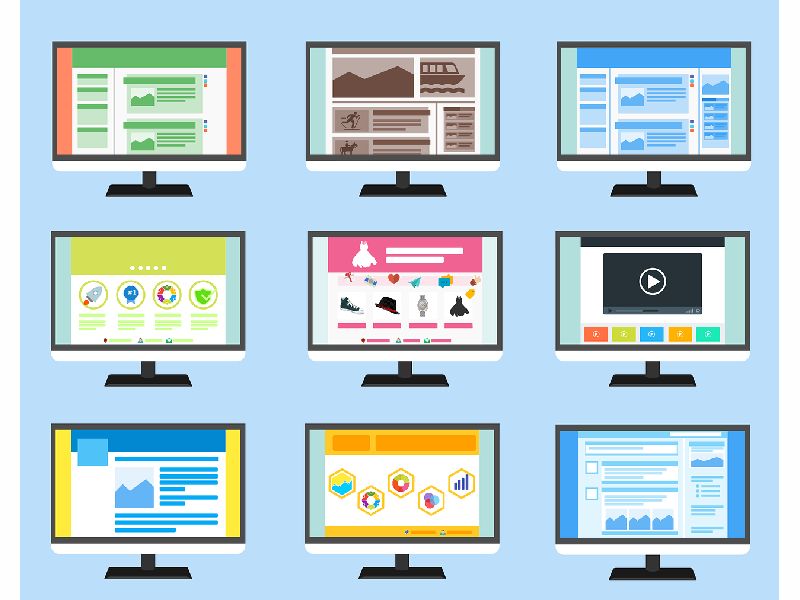Introduction
In the vibrant realm of app design, the intersection of profitability and user experience stands as a pivotal juncture. As developers and designers strive to create innovative and engaging apps, the question of monetization looms large, presenting both opportunities and challenges. How can we monetize our apps effectively without compromising the user experience? This article seeks to explore this complex landscape, offering insights and strategies for achieving the delicate balance between profit and usability.
In today’s digital ecosystem, where users are inundated with countless apps vying for their attention, the importance of prioritizing user experience cannot be overstated. Apps that provide seamless, intuitive, and delightful experiences are more likely to retain users and garner positive reviews, ultimately leading to long-term success. However, at the same time, developers and designers must also consider the need for monetization to sustain their app’s growth and viability in a competitive marketplace.
Understanding the nuances of different monetization models is essential for striking this balance effectively. From in-app purchases and subscriptions to advertisements and freemium models, each approach offers unique advantages and challenges. By carefully considering the implications of each model on the user experience, developers can make informed decisions that align with their app’s goals and target audience.
Yet, the impact of monetization decisions extends beyond mere revenue generation; it can profoundly shape the user experience itself. Intrusive advertisements, aggressive upselling tactics, and hidden fees can all detract from the usability and enjoyment of an app, leading to user frustration and abandonment. Conversely, a well-executed monetization strategy can enhance the user experience, providing value-added features and services that enrich the app’s functionality and appeal.
To illustrate the real-world implications of monetization on user experience, we will delve into a case study of a popular app that has navigated this terrain successfully. By examining the app’s monetization strategy and its impact on user satisfaction and retention, we can glean valuable lessons and best practices for achieving a harmonious balance between profit and usability.
In the subsequent sections of this article, we will explore strategies for designing user-friendly monetization features, navigate ethical considerations in app monetization, and envision the future of app monetization in an ever-evolving landscape. Through a comprehensive examination of these topics, we aim to empower developers and designers to monetize their apps effectively while prioritizing the needs and preferences of their users.
Join me on this journey as we unravel the intricacies of monetizing user experience and discover how to create apps that are both profitable and user-centric. Let’s embark on a quest to strike the perfect balance between profit and usability, crafting experiences that delight users and drive sustainable growth.
Understanding Monetization Models
In the vast ecosystem of app monetization, various models exist, each with its own set of advantages, challenges, and implications for user experience. Let’s explore some of the most common monetization models and how they can be integrated into app design in a user-friendly manner.
In-App Purchases:
- In-app purchases involve users paying for additional content, features, or virtual goods within the app. This model is particularly popular in gaming apps, where users can buy upgrades, unlock levels, or access exclusive content. When implementing in-app purchases, it’s essential to offer value to users and ensure that purchases enhance, rather than detract from, the overall user experience.
Subscriptions:
- Subscriptions involve users paying a recurring fee for access to premium content, features, or services within the app. This model is common in subscription-based apps such as streaming services, news publications, and productivity tools. When designing subscription-based apps, it’s crucial to communicate the value proposition clearly and provide a seamless subscription management experience to users.
Advertisements:
- Advertising involves displaying ads within the app and generating revenue through impressions, clicks, or conversions. While ads can provide a source of revenue for free apps, they must be implemented thoughtfully to avoid disrupting the user experience. Designers should prioritize non-intrusive ad formats, such as banner ads or native ads, and ensure that ads are relevant and contextualized to the user’s interests.
Freemium:
- The freemium model offers a basic version of the app for free, with optional paid upgrades or premium features available for purchase. This model allows users to experience the app’s core functionality before deciding whether to invest in additional features. When designing freemium apps, it’s essential to strike a balance between the free and premium features, offering enough value in the free version to entice users to upgrade.
Each of these monetization models presents unique opportunities and challenges for app designers. By understanding the implications of each model on user experience and revenue generation, designers can make informed decisions that align with their app’s goals and target audience.
The Impact of Monetization on User Experience:
Monetization decisions have a profound impact on the user experience of an app. Whether it’s the implementation of in-app purchases, subscription models, advertisements, or freemium offerings, how these monetization strategies are integrated into the app can significantly influence user satisfaction, retention, and overall perception of the app.
Intrusive Monetization:
- When monetization strategies are implemented in a way that interrupts or disrupts the user experience, it can lead to frustration and dissatisfaction among users. For example, intrusive advertisements that pop up frequently or interrupt gameplay can detract from the enjoyment of using the app, leading users to abandon it in favor of alternatives.
Cluttered User Interface:
- Monetization features that clutter the user interface with excessive promotions, upselling prompts, or promotional banners can diminish the usability of the app. A cluttered UI can confuse users, make it difficult to navigate the app, and detract from the overall user experience. Designers must strike a balance between promoting monetization opportunities and maintaining a clean, intuitive interface.
Lack of Transparency:
- Transparency is essential in monetization practices to build trust and credibility with users. Hidden fees, undisclosed subscription terms, or deceptive advertising practices can erode user trust and damage the app’s reputation. Designers should ensure that pricing and payment terms are clearly communicated to users and that monetization practices are transparent and fair.
User-Centric Monetization:
- On the other hand, when monetization strategies are designed with the user’s needs and preferences in mind, they can enhance the overall user experience. For example, offering value-added features or premium content through in-app purchases or subscriptions can provide users with additional value and enhance their enjoyment of the app.
Balancing Revenue Goals with User-Centric Design:
- Designers must strike a delicate balance between achieving revenue goals and prioritizing user-centric design principles. By understanding the needs and preferences of their target audience, designers can develop monetization strategies that are both profitable and user-friendly. This may involve conducting user research, gathering feedback, and iterating on monetization features to optimize the user experience.
Strategies for Designing User-Friendly Monetization Features:
To ensure that monetization strategies enhance, rather than detract from, the user experience, designers must employ thoughtful and user-centric approaches. Here are some key strategies for designing user-friendly monetization features:
Non-Intrusive Advertisements:
- Opt for non-intrusive ad formats, such as banner ads or native ads, that blend seamlessly with the app’s design and content. Avoid interruptive ad experiences that disrupt the user flow or detract from the app’s core functionality. Additionally, provide users with the option to remove ads through in-app purchases or premium subscriptions for an ad-free experience.
Value-Driven In-App Purchases and Subscriptions:
- When offering in-app purchases or subscription options, focus on providing tangible value to users. Offer premium features, exclusive content, or enhanced functionality that aligns with users’ needs and preferences. Clearly communicate the benefits of upgrading to premium tiers or subscribing to ensure that users understand the value proposition.
Transparent Pricing and Payment Policies:
- Transparency is key when it comes to pricing and payment policies. Clearly display pricing information, subscription terms, and payment methods to users before they make a purchase decision. Avoid hidden fees or deceptive pricing practices that can erode user trust and credibility. Provide users with flexible payment options and ensure that the checkout process is streamlined and secure.
Ad-Free or Premium Versions:
- Offer users the option to upgrade to an ad-free or premium version of the app for a fee. This allows users who value an uninterrupted and premium experience to support the app financially while also providing an alternative revenue stream for the developer. Clearly communicate the benefits of upgrading to the premium version, such as an ad-free experience, exclusive content, or additional features.
Data-Driven Decision Making:
- Utilize data analytics to gain insights into user behavior, preferences, and engagement patterns. Analyze user interactions with monetization features, such as in-app purchases or subscription sign-ups, to identify opportunities for optimization and improvement. Iterate on monetization strategies based on user feedback and data-driven insights to continuously enhance the user experience and maximize revenue generation.
By incorporating these strategies into app design, designers can create monetization features that are user-friendly, transparent, and aligned with users’ needs and preferences. By prioritizing the user experience while also achieving revenue goals, designers can create apps that resonate with users and drive sustainable growth in an increasingly competitive landscape.
Case Study: Implementing User-Friendly Monetization Features in a Fitness App
Let’s delve into a real-life example of how user-friendly monetization features were integrated into a fitness app to enhance the overall user experience.
Background:
The fitness app, “FitLife,” aimed to help users achieve their health and fitness goals through personalized workout plans, nutrition tracking, and motivational features. While the app initially offered basic functionality for free, the development team sought to introduce premium features to monetize the app while maintaining a positive user experience.
Integration of Premium Features:
Instead of implementing intrusive advertisements or restricting essential features behind a paywall, the team opted for a value-driven approach to monetization. They introduced premium features such as personalized workout plans created by certified trainers, advanced analytics for tracking progress, and access to exclusive workout challenges and content.
Transparent Pricing and Payment Options:
The pricing for premium features was clearly displayed within the app, with users given the option to purchase a monthly or annual subscription. The team ensured transparency by outlining the benefits of premium membership and clearly stating the subscription terms, including renewal dates and cancellation policies. Additionally, multiple payment options were provided to accommodate users’ preferences.
Ad-Free Experience:
Recognizing that ads could disrupt the flow of the app and detract from the user experience, the team offered users the option to upgrade to an ad-free experience through a premium subscription. This provided users with a seamless and uninterrupted workout experience while also generating revenue for the app.
Iterative Testing and Optimization:
Throughout the development process, the team conducted iterative testing and optimization to refine the monetization features based on user feedback and data-driven insights. They monitored user engagement with premium features, analyzed conversion rates for subscription sign-ups, and iterated on pricing and promotional strategies to maximize revenue while maintaining user satisfaction.
Positive User Feedback and Retention:
The integration of user-friendly monetization features received positive feedback from users, with many expressing appreciation for the value-added benefits of premium membership. User retention rates improved as users found value in the premium features and were willing to continue their subscriptions.
Ethical Considerations in App Monetization:
In the pursuit of profitability, it’s crucial for app developers and designers to uphold ethical standards and prioritize the well-being of users. Here are some key ethical considerations to keep in mind when implementing monetization strategies:
Transparency and Fairness:
- Transparency should be at the forefront of all monetization practices. Users should be informed about how their data is being used, what they are paying for, and what they can expect in return. Avoid deceptive or misleading tactics that could erode trust and damage the app’s reputation. Pricing should be fair and reflective of the value provided to users.
User Privacy and Data Protection:
- Respect user privacy and adhere to data protection regulations. Collect only the necessary user data for monetization purposes and obtain explicit consent before accessing or sharing personal information. Implement robust security measures to safeguard user data from unauthorized access or breaches.
Avoiding Manipulative Tactics:
- Avoid employing manipulative tactics or dark patterns to encourage users to make purchases or engage with monetization features. Design elements such as misleading prompts, hidden costs, or coercive language should be avoided. Instead, focus on providing genuine value to users and earning their trust through transparent and ethical practices.
Ensuring Accessibility and Inclusivity:
- Monetization strategies should be inclusive and accessible to all users, regardless of their financial means or abilities. Consider offering alternative pricing options, discounts for students or low-income individuals, or accessibility features for users with disabilities. Ensure that monetization features do not create barriers to access or discriminate against any group of users.
Upholding Trust and Integrity:
- Uphold trust and integrity in all interactions with users. Honesty, integrity, and respect should guide every decision related to monetization. Prioritize the long-term relationship with users over short-term gains, and strive to build a loyal and engaged user base through transparent and ethical practices.
By adhering to these ethical considerations, app developers and designers can cultivate a positive and trustworthy reputation, foster user loyalty, and create a sustainable foundation for long-term success. Ultimately, prioritizing ethics and user well-being in app monetization practices not only benefits users but also contributes to a healthier and more sustainable digital ecosystem.
Conclusion:
In the dynamic landscape of app development and monetization, it’s imperative for designers and developers to navigate with a compass pointing towards ethics, transparency, and user-centricity. As we conclude our exploration of balancing profit and usability in app design, let’s recapitulate the key principles that underpin ethical app monetization:
Transparency: Clear and honest communication with users about monetization practices, pricing, and data usage fosters trust and credibility.
User Privacy: Respecting user privacy and adhering to data protection regulations are essential for maintaining user trust and safeguarding sensitive information.
Fairness: Monetization strategies should be fair and equitable, ensuring that all users have equal access to app features and opportunities.
Accessibility: Monetization features should be inclusive and accessible to users of all backgrounds and abilities, without creating barriers to access.
Integrity: Upholding integrity and ethical standards in all aspects of app design and monetization builds a foundation of trust and loyalty with users.
By upholding these principles, designers and developers can create apps that not only generate revenue but also prioritize the well-being and satisfaction of users. In doing so, they contribute to a positive and sustainable digital ecosystem where users feel valued, respected, and empowered.
As we look towards the future of app monetization, let’s continue to innovate and evolve while remaining steadfast in our commitment to ethical practices and user-centric design. Together, we can create apps that enrich lives, foster connection, and make a positive impact on the world.











